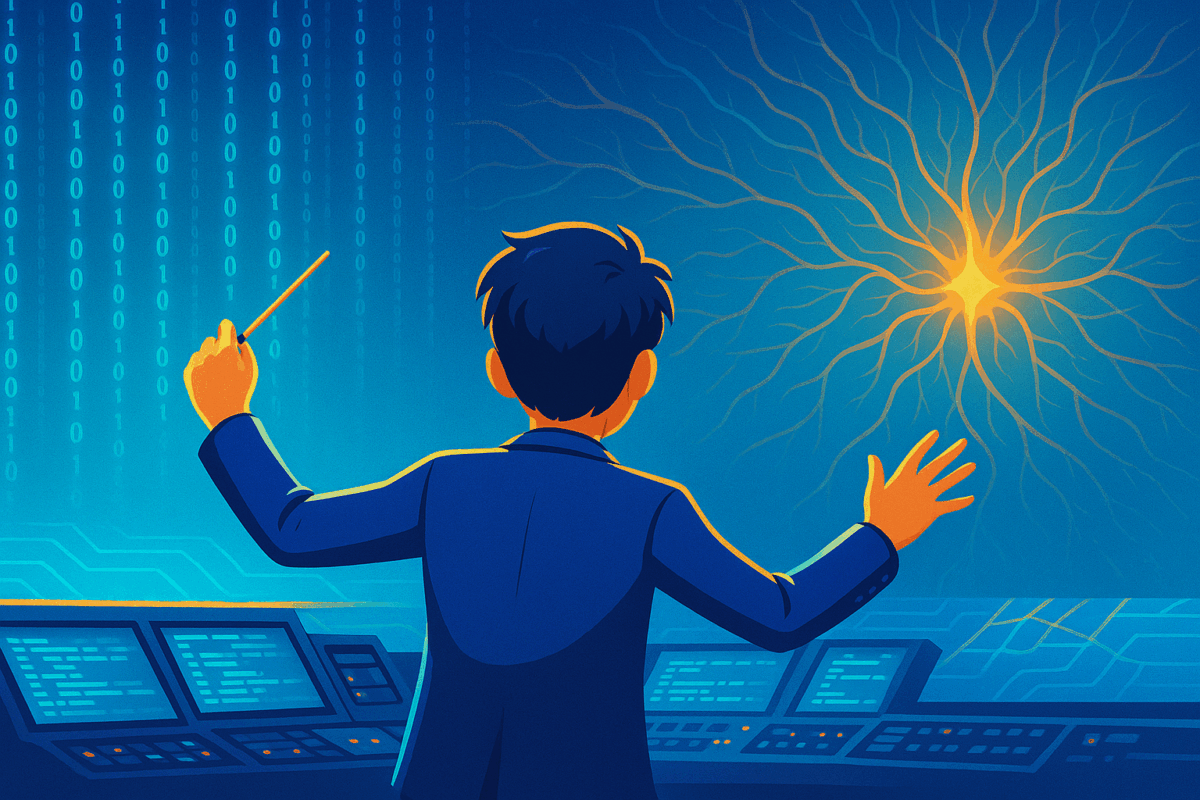Once upon a time, a “software engineer” meant someone who typed syntax until something finally compiled. In the coming decade, that definition is going extinct.
We’re entering the era of vibe coding — a world where engineers don’t just write code, they orchestrate it. AI handles the mechanical work. Humans supply the intent, direction, and creative logic that gives code its purpose.
⚙️ The New Engineer: A Code Conductor
By 2030, a software engineer will look less like a keyboard warrior and more like a system conductor — fluent in the rhythms of human goals, machine intelligence, and the dynamic interplay between them.
Instead of coding line by line, they’ll:
-
Direct multiple AI agents to build, test, and deploy.
-
Translate high-level objectives into machine-interpretable instructions.
-
Guide emergent system behavior, balancing automation with accountability.
The job shifts from “how do I code this?” to “how do I align this system with intent?”
🧠 Skills That Will Define the Future
1. Prompt Engineering and AI Dialogue
Knowing how to talk to AI becomes a core competency. The new IDE will feel like a conversation — half English, half structured logic. The better you communicate nuance, the more capable your digital collaborators become.
2. Systems Thinking
Low-level syntax will matter less than seeing the big picture: how data, users, algorithms, and AI agents interact across an ecosystem. Future engineers will be orchestrators of flow, not authors of functions.
3. Human-AI Collaboration Design
Tomorrow’s coders will design relationships as much as they design software — deciding what the AI should handle, when it should ask for feedback, and how it should explain its reasoning.
4. Ethical Engineering
With great automation comes great potential for chaos. Engineers will need frameworks for bias detection, data transparency, and explainability. Ethics won’t be a soft skill anymore — it’ll be a core deliverable.
5. Domain Expertise Over Syntax Expertise
The best developers will be the ones who understand the domain itself. Syntax becomes background noise; understanding becomes the differentiator.
🧩 The New Stack
Tomorrow’s “full stack” developer might operate across these layers:
| Layer | Description |
|---|---|
| AI Interface Layer | Conversational orchestration between humans and machine agents |
| Automation Layer | Autonomous pipelines for build, test, and deploy |
| Human Oversight Layer | Approval and feedback systems that interpret AI reasoning |
| Ethical/Alignment Layer | Guardrails for explainability, compliance, and safety |
Software development becomes intent development.
⚡ The Vibe Coding Era
Imagine logging in to work with your AI co-engineer, “Argos.”
You describe the feature you want:
“Build an adaptive API for low-latency data streams that scales horizontally by load.”
Argos drafts the architecture, writes the tests, and simulates performance metrics.
You tweak, question, and guide.
You’re not fighting the compiler anymore — you’re vibing with intelligence.
🧩 Our Reality at Subdomain Systems LLC
At Subdomain Systems LLC, this isn’t theory — it’s how we work today.
Our Software Development Life Cycle (SDLC) is 100% built on this next-generation paradigm.
Every new project, from backend pipelines to ecommerce automation, begins with AI-human orchestration.
We design intent, define constraints, and let the substrate — our internal AI layer — handle the heavy lifting.
And our new hires?
They’re not “coders” in the old sense. They’re AI conductors, system curators, and creators of digital behavior.
We recruit people who can think in flows, question assumptions, and vibe with the machine — because that’s where real creation happens now.
🔮 The Takeaway
The future software engineer will be:
-
Half technologist, half philosopher.
-
A strategist fluent in systems, ethics, and collaboration.
-
The human spark in a loop increasingly run by machines.
And that’s exactly who we’re building with.
At Subdomain Systems, the future isn’t coming — it’s deployed.



